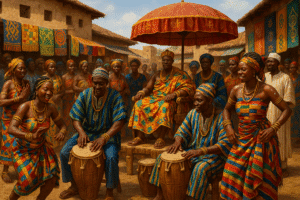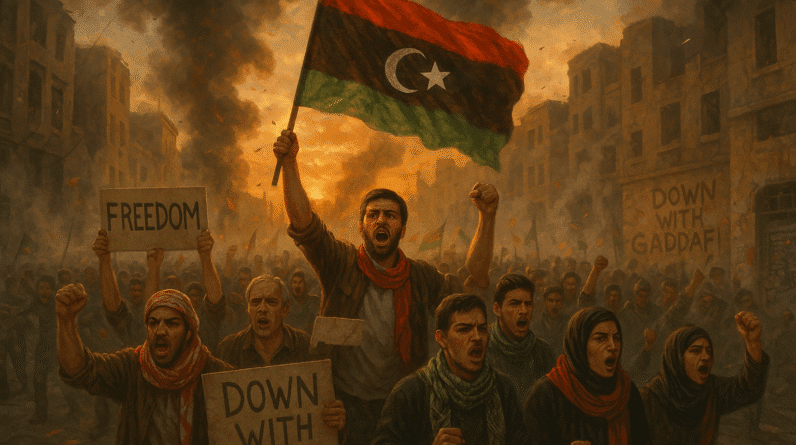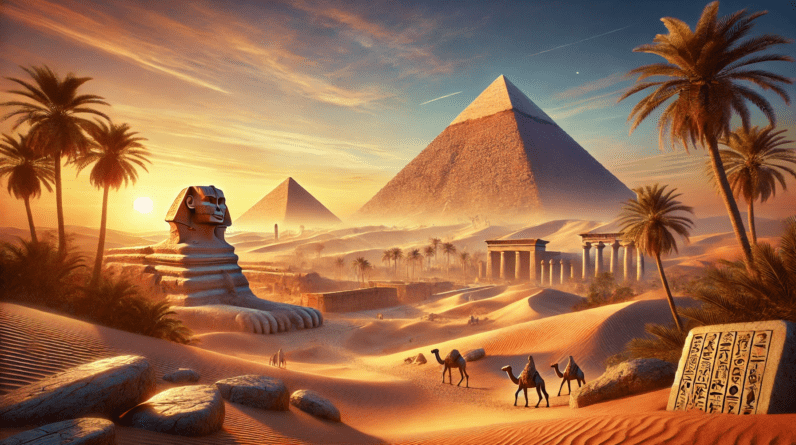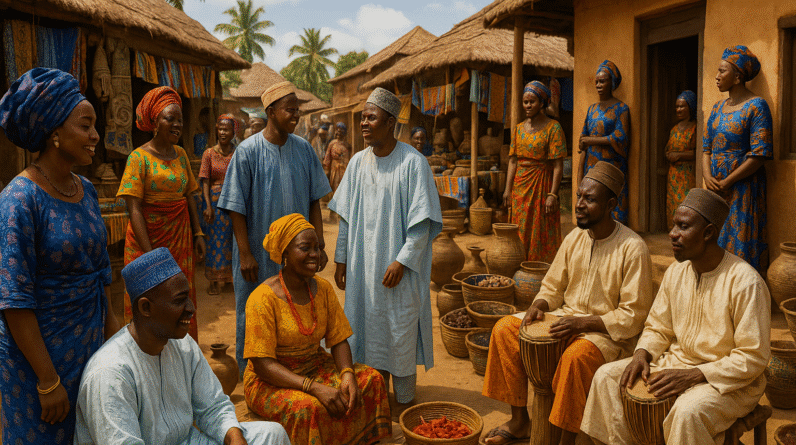
Lost Kingdom of Mali – Have you Hard of It?
Lost Kingdom of Mali. You may have come across tales of ancient empires and forgotten civilizations in history books or documentaries. But have you heard of the Lost Kingdom of Mali? In this article, we will take a deep dive into the fascinating history of Mali, its rise and fall, and the legacy it has left behind.
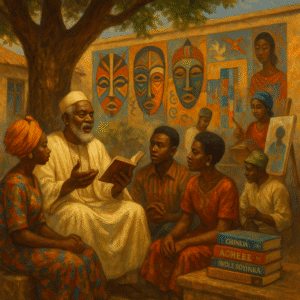
The Rise of the Mali Empire
Imagine a time when the vast Sahara Desert was not just a barren wasteland but a thriving center of trade and civilization. This was the reality during the rise of the Mali Empire, around the 13th century. It all began with the legendary Sundiata Keita, who is often referred to as the “Lion King.”
Legend has it that Sundiata Keita, a skilled warrior, united the Mandinka people and conquered neighboring tribes to establish the powerful Mali Empire. Sundiata’s leadership and military prowess led to the rapid expansion of the empire, making it one of the wealthiest and most influential in West Africa.
The Wealth of Mali
One of the key factors that contributed to the wealth of the Mali Empire was its strategic location along the trans-Saharan trade routes. Merchants from North Africa would travel through the Sahara to reach the markets of West Africa, exchanging salt, gold, and other commodities along the way.
Gold, in particular, played a crucial role in the economy of Mali. The empire was rich in gold mines, and it was the main source of the precious metal in the region. The legendary city of Timbuktu, located along the Niger River, became a hub of trade, scholarship, and culture, attracting travelers and traders from far and wide.
The Importance of Gold
Gold was highly valued in Mali and was used not only as a form of currency but also for creating elaborate jewelry, ornaments, and ceremonial objects. The Mali Empire became known for its intricate goldwork, which reflected the wealth and splendor of the ruling elite.
The legendary wealth of Mali and its abundance of gold captured the imagination of travelers and explorers from distant lands. The empire’s reputation for opulence and prosperity spread far and wide, further enhancing its status as a major player in the medieval world.
The Fall of the Mali Empire
Despite its wealth and power, the Mali Empire faced challenges that would eventually lead to its downfall. One of the key factors was internal strife and succession disputes among the ruling elite. After the death of Sundiata Keita, his descendants struggled to maintain unity and control over the vast empire.
Another factor that contributed to the decline of the Mali Empire was external threats from neighboring empires and kingdoms. The rise of the Songhai Empire to the east and the invasion of the Moroccan army in the 16th century weakened Mali’s grip on power and influence.
The Moroccan Invasion
In 1591, the Moroccan army, led by Ahmad al-Mansur, launched a military campaign against the weakened Mali Empire. The decisive Battle of Tondibi marked the end of Mali’s dominance in the region, as the Moroccan forces defeated the Malian army and captured the legendary city of Timbuktu.
The Moroccan invasion of Mali had far-reaching consequences, as it shattered the once-mighty empire and brought an end to its golden age. The rich cultural heritage and legacy of Mali, however, would continue to endure through the centuries, leaving a lasting impact on the history of Africa.
The Legacy of the Lost Kingdom
Despite its eventual collapse, the legacy of the Mali Empire has endured through the centuries, leaving a lasting impact on the region and beyond. The empire’s cultural, artistic, and architectural achievements continue to inspire scholars, artists, and historians to this day.
Art and Architecture
One of the most enduring legacies of the Mali Empire is its rich tradition of art and architecture. The empire was known for its magnificent palaces, mosques, and monuments, many of which still stand as testaments to the grandeur of Mali’s past.
The Great Mosque of Djenne, for example, is a striking example of Sudano-Sahelian architecture and is considered one of the most important landmarks in Mali. Built from mud bricks and adorned with intricate carvings and designs, the mosque reflects the craftsmanship and artistry of the Malian people.
Oral Traditions and Epic Poetry
Another important aspect of Mali’s legacy is its rich oral traditions and epic poetry. Griots, or traditional bard historians, played a crucial role in preserving the history and culture of the empire through storytelling and song.
The Epic of Sundiata, for instance, is a famous oral epic that recounts the heroic deeds of the empire’s founder, Sundiata Keita. Passed down through generations, the epic has become a symbol of Mali’s heritage and resilience in the face of adversity.

Rediscovering the Lost Kingdom
In recent years, archaeologists, historians, and scholars have begun to rediscover the Lost Kingdom of Mali through excavations, research, and cultural preservation efforts. The uncovering of ancient ruins, artifacts, and manuscripts has provided new insights into the rich history and heritage of the empire.
Archaeological Discoveries
Archaeological excavations in Mali have unearthed a wealth of artifacts and ruins that shed light on the daily life, customs, and traditions of the empire. From pottery shards and tools to elaborate jewelry and textiles, these discoveries offer a glimpse into the complexity and sophistication of Mali’s society.
One of the most significant archaeological sites in Mali is the ancient city of Gao, which was a prominent center of trade and culture during the height of the empire. Excavations at Gao have revealed evidence of urban planning, architecture, and craftsmanship that showcase the ingenuity and creativity of the Malian people.
Cultural Preservation
Efforts to preserve and protect Mali’s cultural heritage have been ongoing, with organizations such as UNESCO working to safeguard historic sites, manuscripts, and traditions from destruction and looting. The Timbuktu Manuscripts, a collection of ancient texts and documents, have been digitized and archived to ensure their preservation for future generations.
By rediscovering the Lost Kingdom of Mali and sharing its history with the world, we can honor the legacy of this once-great empire and celebrate the enduring spirit of its people. As you reflect on the rise and fall of Mali, remember the lessons we can learn from the past and the importance of preserving our shared cultural heritage for generations to come.
Lost Kingdom of Mali FAQ: Uncovering the Mysteries of West Africa’s Golden Empire
Lost Kingdom of Mali – imagine a realm of shimmering gold rivers, soaring mosques, and legendary rulers whose wealth echoed through time. You’ve stumbled upon the enigmatic story of one of history’s most powerful yet under-explored empires—a tale that solves the mystery of why this West African titan dwindled into the annals of legend and invites you to embark on a journey of discovery.
1 What Was the Lost Kingdom of Mali?
The Kingdom of Mali flourished during the 13th to 16th centuries in West Africa, covering present-day Mali, Mauritania, Senegal, Guinea, and the Ivory Coast. It rose to prominence through abundant natural resources—especially gold—and strategic control of trade routes across the Sahara Desert.
- Founded by Sundiata Keita around 1235 CE
- Reached its golden zenith under Mansa Musa (reigned c. 1312–1337), famed for his 1324 pilgrimage to Mecca
- Important cities included Timbuktu, Gao, and Djenné, vibrant centers of trade, scholarship, and spirituality
2 Why Is It Called “Lost”?
Although once powerful, the empire gradually fragmented in the 15th century due to
- Internal succession conflicts
- Pressure from expanding rival states like the Songhai Empire
- Economic disruption and shifting trade dynamics
By the 16th century, Mali’s political unity had collapsed, its stories surviving primarily through oral tradition and African chronicles.
3 When did the Kingdom of Mali peak?
A: Mali’s golden age was between c. 1312–1337 CE, during Mansa Musa’s reign, who arguably made it the richest empire of its time.
4 Who was Mansa Musa and why does he matter?
A: Mansa Musa, the tenth emperor, is legendary for his minbar (pulpit) in Cairo and pilgrimage that shaped global perceptions of Mali’s wealth—he redistributed so much gold that it temporarily destabilized local economies. His reign also elevated Timbuktu as a hub of Islamic learning and architecture.
5 What happened to Timbuktu’s manuscripts?
A: Timbuktu is home to tens of thousands of manuscripts capturing early West African jurisprudence, astronomy, mathematics, and spirituality. Many are preserved in private and public libraries (e.g., Ahmed Baba Institute) and are increasingly being digitized to safeguard global heritage.
6 Can you visit ruins of the Lost Kingdom of Mali today?
A: Absolutely. Highlights include:
- Djenné’s Great Mosque
- Remains of Sankoré Mosque in Timbuktu
- Archaeological sites dotting the Niger River valley—all offering immersive glimpses into medieval Mali.
7 Why the Kingdom Still Matters Today
- Rediscovering African Intellectual Heritage
Timbuktu’s manuscripts are revolutionizing our understanding of pre-colonial African science and philosophy. - Inspiring Economic Transformation
The empire’s rise through sustainable trade and resource management offers lessons for modern African growth. - Preserving Cultural Identity
Recent efforts to revive local languages, oral histories, and traditional architecture reinforce national pride and cultural resilience.
Summary & Takeaway
- Lost Kingdom of Mali grew rich and influential in 13th–14th century West Africa
- Fell by the 16th century due to internal conflict and rising rivals
- Its legacy endures through dazzling outcomes: from Mansa Musa’s historic pilgrimage to Timbuktu’s fabled manuscripts
- Rediscovery efforts highlight its lasting relevance to global heritage and sustainable development
Take Action: Explore Mali’s manuscripts online, plan a cultural journey to Timbuktu and Djenné, or delve deeper into Sundiata and Mansa Musa’s chronicle. One click opens a brilliant chapter of hidden African history.
Conclusion
In conclusion, the Lost Kingdom of Mali stands as a testament to the power and influence of one of Africa’s greatest empires. From its rise to wealth and glory to its eventual decline and legacy, Mali’s story is a reminder of the rich tapestry of history that shapes our world today.
As you reflect on the history of Mali and the lessons we can learn from its past, consider the impact of empires and civilizations on our understanding of culture, art, and society. By exploring the lost kingdoms of the past, we can gain a deeper appreciation for the diversity and complexity of our shared human experience.
